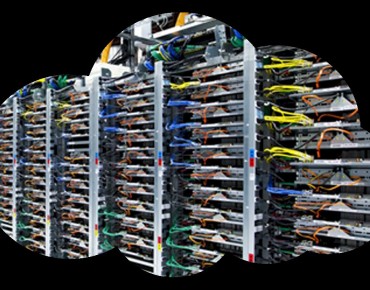Datacenter Lifts Intel In 2013, But Can It Repeat In 2014?

It is easy to predict what the big cloud builders and hyperscale datacenter operators are going to do: They are going to build more glasshouses and buy or build more servers and storage. Predicting what other enterprises are going to do is a bit trickier, as Intel found out in its most recent quarter.
In the final quarter of 2013, Intel's Data Center and Connected Systems Group was, once again, a bright spot in the numbers, growing both sales and profits despite the fact that spending across enterprise customers was a little less than the chip maker had been anticipating. Enterprises outside of the name-brand hyperscale datacenter operators – Google, Amazon, Facebook, Yahoo, Twitter, LinkedIn, and so on – are still spending more than they did in the prior year, and they are expected to do so again this year. But, explained Intel CEO Brian Krzanich on a conference call with Wall Street analysts, the recovery in enterprise spending was not as robust as expected as the year came to a close.
All told, Intel grew its revenues in the fourth quarter by 3 percent, to $13.8 billion, with a $3.5 billion operating income (up 12 percent) and net income of $2.6 billion (up 6 percent). The PC Client Group had flat revenues and actually boosted operating income by a somewhat stunning 20 percent to just under $3.4 billion. Intel's
The Data Center Group had a smidgen under $3 billion in sales of Xeon, Atom, and Itanium chips and related chipsets as well as motherboards to myriad server, storage, and networking equipment makers in the quarter. That was an 8 percent increase compared to the fourth quarter of 2012. Operating income for this segment was $1.46 billion, up 11 percent. (It is always a good thing when profits are growing faster than revenues.) Stacy Smith, Intel's CFO, said in his commentary accompanying the financial results that chip shipments in the fourth quarter were up 1 point but average selling prices rose 8 points. This reflects the richer mix of processors that cloud and hyperscale datacenter operators are starting to buy from Intel to get the best bang for the buck.
For the full year, Data Center Group had $11.24 billion in revenues, up 6.9 percent, but operating income only rose by 2.9 percent to $5.16 billion. The year ended with some momentum, but it started out a little slow, particularly among enterprises.
Back in November, at its annual event for Wall Street analysts, Data Center Group general manager Diane Bryant conceded that Intel was a little rosy in its original forecasts back in 2011, saying that it expected for sales to manufacturers of IT products aimed at enterprises – as distinct from the cloud, high performance computing, and telecommunications sectors – would rise by a 15 percent compound annual growth rate between 2011 and 2016. What happened instead is that Intel's revenues to enterprises shrank a point. The good news is that spending at telcos held up and at clouds and HPC centers were better than expected, but still, overall growth was trending at 8 percent between 2011 and 2013. With the virtualization wave largely over and enterprises ready to spend on new projects, Intel was confident enough two months ago to project that Data Center Group revenues would grow 15 percent between 2013 and 2017 (again, compounded annually over the period). That growth assumed an 8 percent growth in spending per year among enterprises, and more than 20 percent per year for the cloud, HPC, and telco segments.
Intel's goal two and a half years ago was to double up its Data Center Group revenue to $20 billion by 2016, and it is going to take longer to do this than expected based on current trends. But, even with this, Intel is at least growing its datacenter unit and not contracting like handful of RISC server platforms out there. With all of the pressures on Intel – from the top with alternative RISC architectures, from the side with clone X86 processors from AMD, and from the bottom with a slew of ARM vendors who want to bring that RISC chip from client devices to the servers that feed them – the company is doing better than perhaps many had expected. But forecasting enterprise spending continues to be an issue.
Krzanich confirmed on the call that the "Ivy Bridge-EX" Xeon E7 v2 processor would be announced later this quarter, and pointed out, as EnterpriseTech has already reported, that "Haswell" generation Xeon E5 processors for workhorse two-socket machines are expected later this year.
"At the foundation of this innovation, we continue to grow faster than the rest of the industry," Krzanich said. "This gives us the world's highest performance and lowest power transistors and will result in a growing cost advantage over time."
For the full year, Intel had $52.7 billion in sales, down 1.1 percent, and net income was $9.6 billion, down 12.7 percent. Intel plans to spend around $10.5 billion to $11.5 billion on capital projects this year, and is expecting for sales to be more or less flat.











